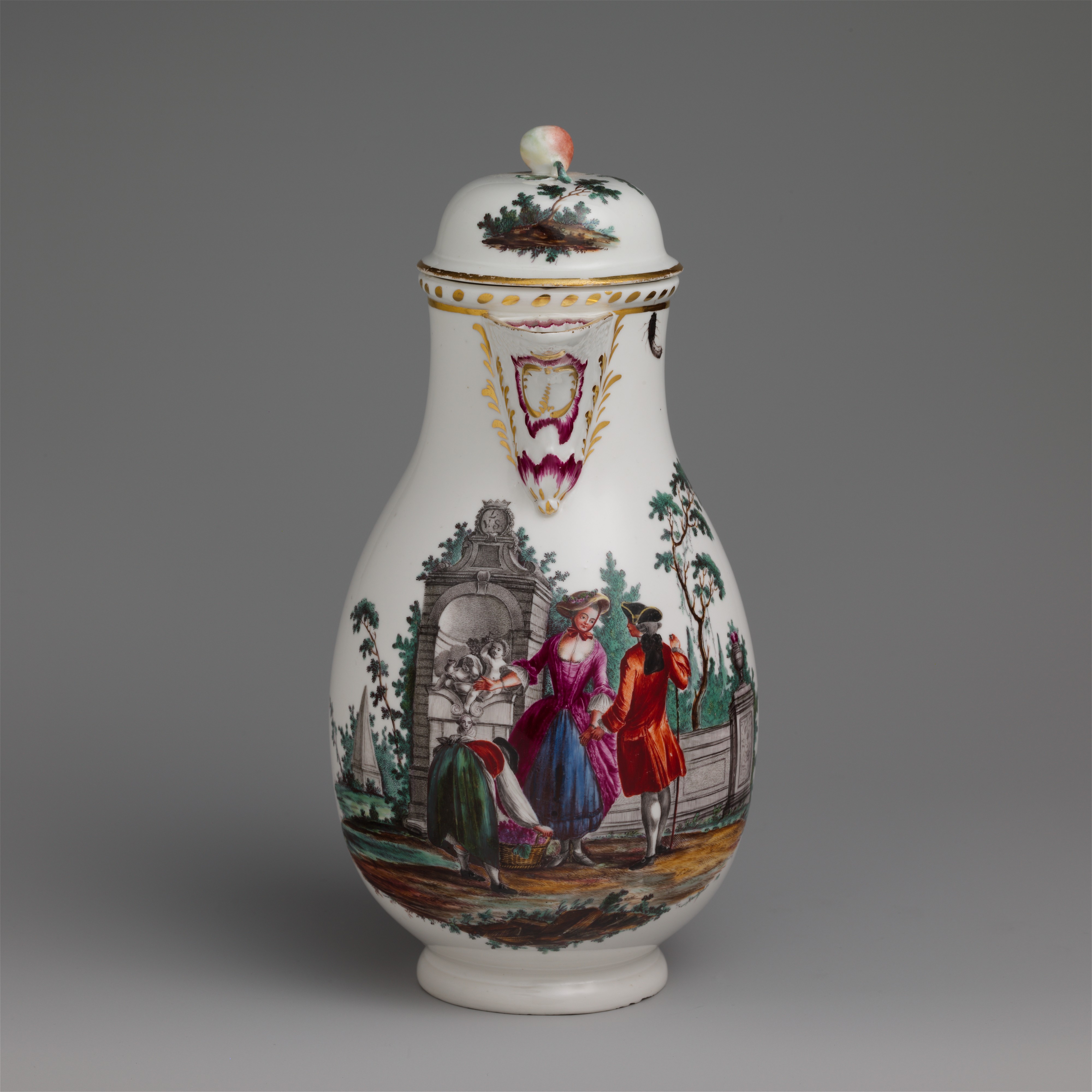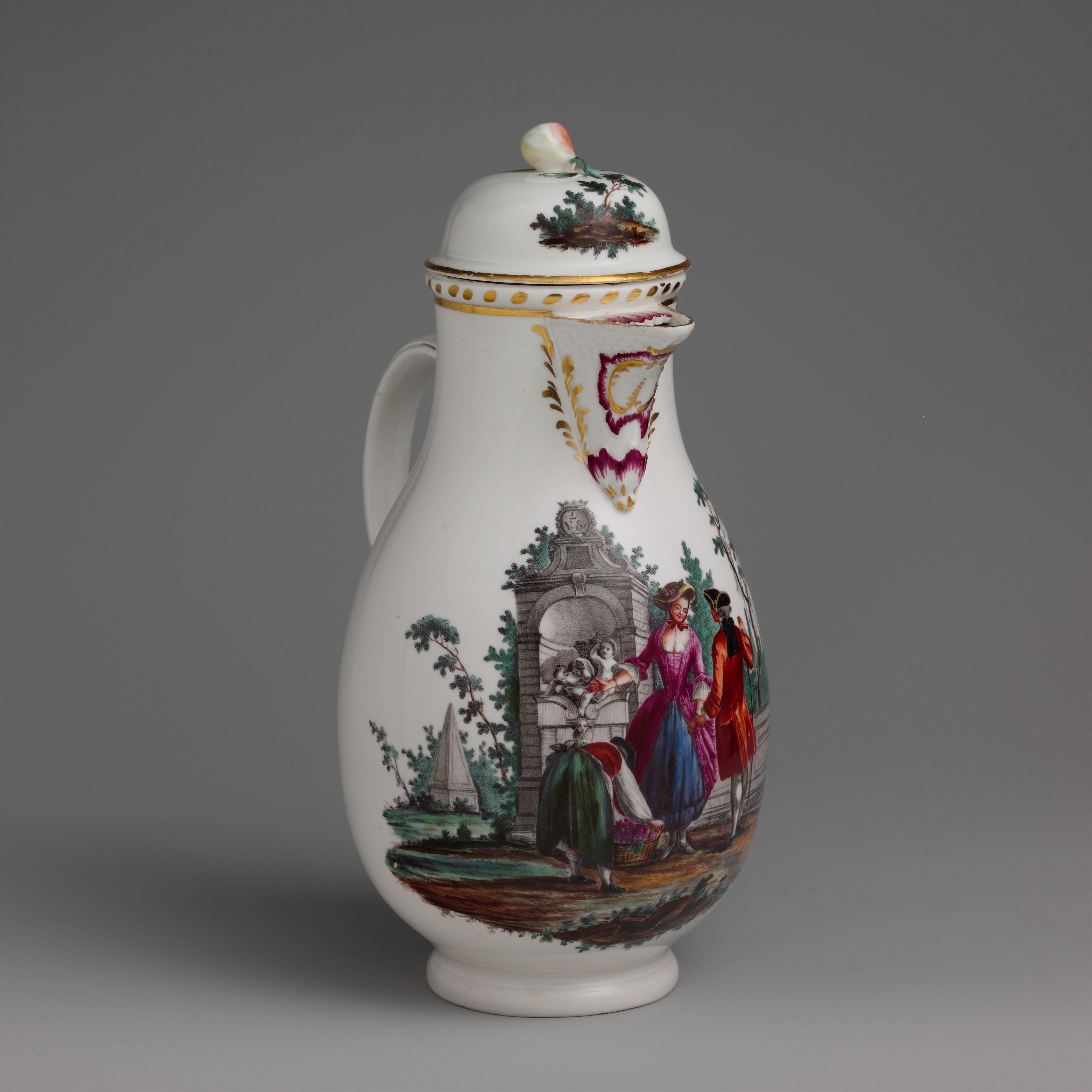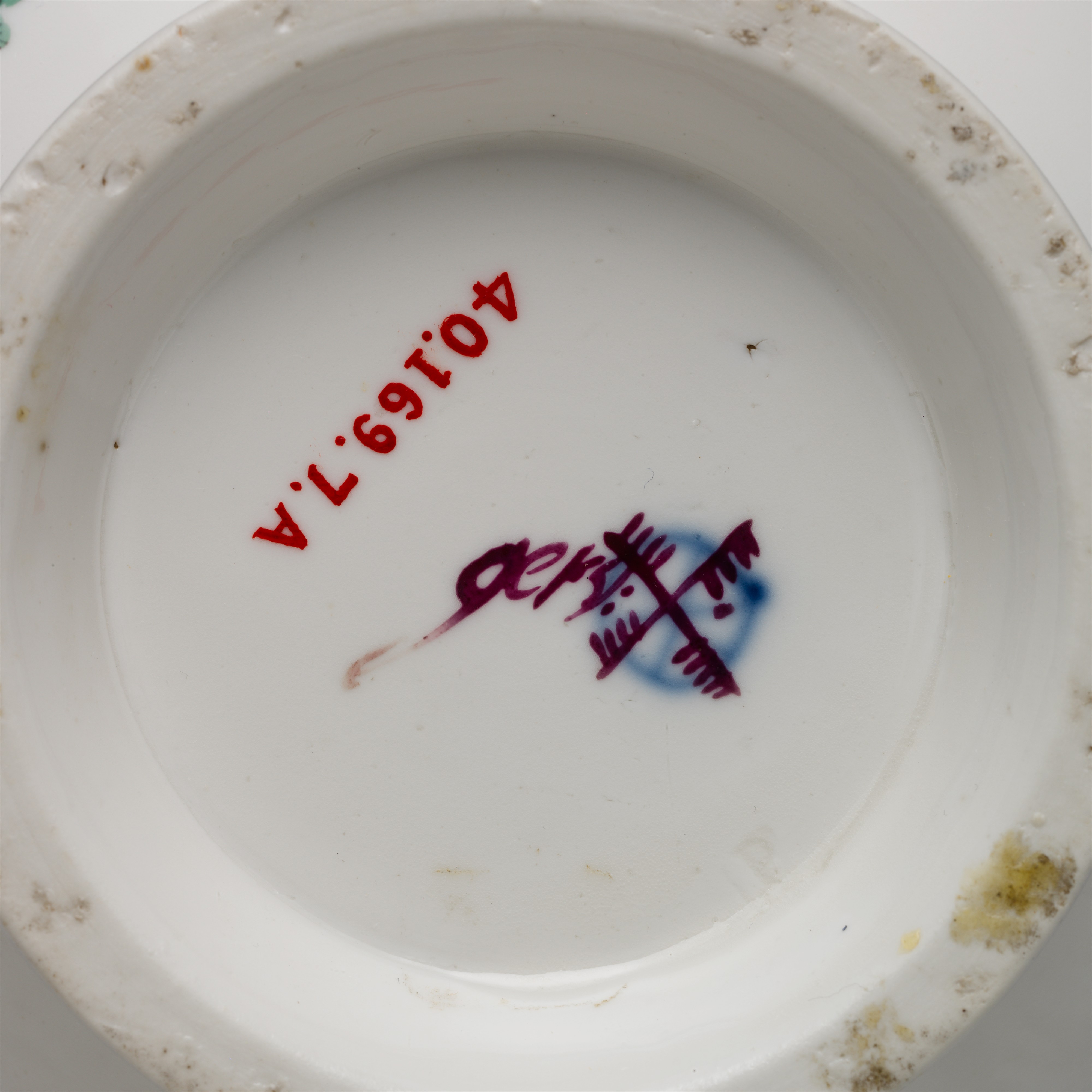Coffeepot
Manufactory Höchst Manufactory German
Decorator Louis-Viktor Gerverot
After a woodcut by Johann Esaias Nilson German
Not on view
The abbreviated signature on the underside of this coffeepot indicates that it was decorated by Louis-Victor Gerverot (French, 1747–1829), a highly skilled and unusually peripatetic porcelain painter who worked at a wide array of porcelain factories in Germany, the Netherlands, and England.[1] Gerverot’s career reflects the itinerant nature of many who were involved in the ceramic industry in eighteenth-century Europe; both porcelain painters and those involved in the more technical aspects of production commonly moved from factory to factory, providing expertise to nascent operations or seeking better terms of employment. The constantly shifting workforce enabled the rapid growth of porcelain factories in Germany, in particular, during the second half of the eighteenth century, but it also meant that factory styles often shifted when they were dominated by the presence, however temporary, of a strong and unusually capable artistic personality.
Gerverot is best known for his expertise in painting birds, a skill that he appears to have acquired while working at the Weesp factory in the Netherlands and further developed during his time at Höchst.[2] The bird painting found on Gerverot’s work at these factories and later at Loosdrecht in the Netherlands is characterized by the animated poses of the birds, their summary execution, and a notable degree of painterly fluidity.[3] In contrast, Gerverot’s depiction of three figures in a landscape on this coffeepot has a high degree of detail and finish, with all of the compositional elements rendered with great precision. This is evident not only in the painting of the landscape and the primary architectural element but also in the subtle shading and detailing of the figures’ clothing. The coffeepot was originally part of a service that is now dispersed, but several of its components have been located.[4] All of these pieces are decorated with similar subject matter, and for the coffeepot, Gerverot derived his composition from a print illustrating the month of October by the Augsburg artist Johann Esaias Nilson (German, 1721–1788).[5] Gerverot has adapted Nilson’s composition with great fidelity, although he has extended the abbreviated landscape to either side with elements of his own invention to accommodate the shape of the coffeepot. Gerverot has also added the initials L. / V.S. to the circular disk that caps the architectural niche, and it is probable that these represent the intended owner of the service. Except when intended as a monogram, initials are rarely found incorporated into porcelain decoration, and since they are not those of Gerverot, it would seem by their prominence to refer to the patron who commissioned the tea and coffee service. The same initials also appear on the hot milk jug from the service,[6] reinforcing the supposition that they indicate in abbreviated form the person for whom the service was created. It is possible that the patron specified the type of decoration he preferred, which might account for Gerverot’s use of figural scenes rather than his more customary birds.
While the underside of the coffeepot bears the Höchst factory mark of a wheel executed in underglaze blue, Gerverot has painted gerv. and a windmill sail in dark purple enamel over the factory mark. It appears that most if not all of the components of the service are similarly marked, and it is likely that he decorated the porcelain after his departure from Höchst in 1773, at which time he began working in Schrezheim. It has been noted by Charlotte Jacob-Hanson that factory practice would not have condoned the use of a painter’s mark over that of the factory’s,[7] so it is probable that Gerverot took undecorated porcelain, known as “blanks,” with him when he left the factory, or purchased the components after his departure.[8] Both the trajectory of Gerverot’s career and the circumstances behind the creation of the service to which this coffeepot belongs reflect to an unusual degree the complex and multifaceted aspects of porcelain production in the late eighteenth century.
Footnotes
(For key to shortened references see bibliography in Munger, European Porcelain in the Metropolitan Museum of Art. NY: The Metropolitan Museum of Art, 2018)
1 According to Clare Le Corbeiller, Gerverot is recorded as having worked at fourteen different faience and porcelain factories; Le Corbeiller 1990, p. 35. The most recent comprehensive studies of Gerverot’s career are Jacob- Hanson 2004; Jacob- Hanson 2007.
2 See Jacob- Hanson 2004, pp. 197–200.
3 For examples, see Reber 1975; Jacob- Hanson 2004.
4 Jacob- Hanson 2007, p. 73, n. 27.
5 MMA 45.101.16.
6 Sotheby’s, New York, sale cat., February 24, 1978, no. 56.
7 Jacob- Hanson 2007, p. 63.
8 Gerverot notes in a letter that he purchased undecorated porcelain from Höchst while working in Schrezheim; ibid.
Due to rights restrictions, this image cannot be enlarged, viewed at full screen, or downloaded.
This artwork is meant to be viewed from right to left. Scroll left to view more.





